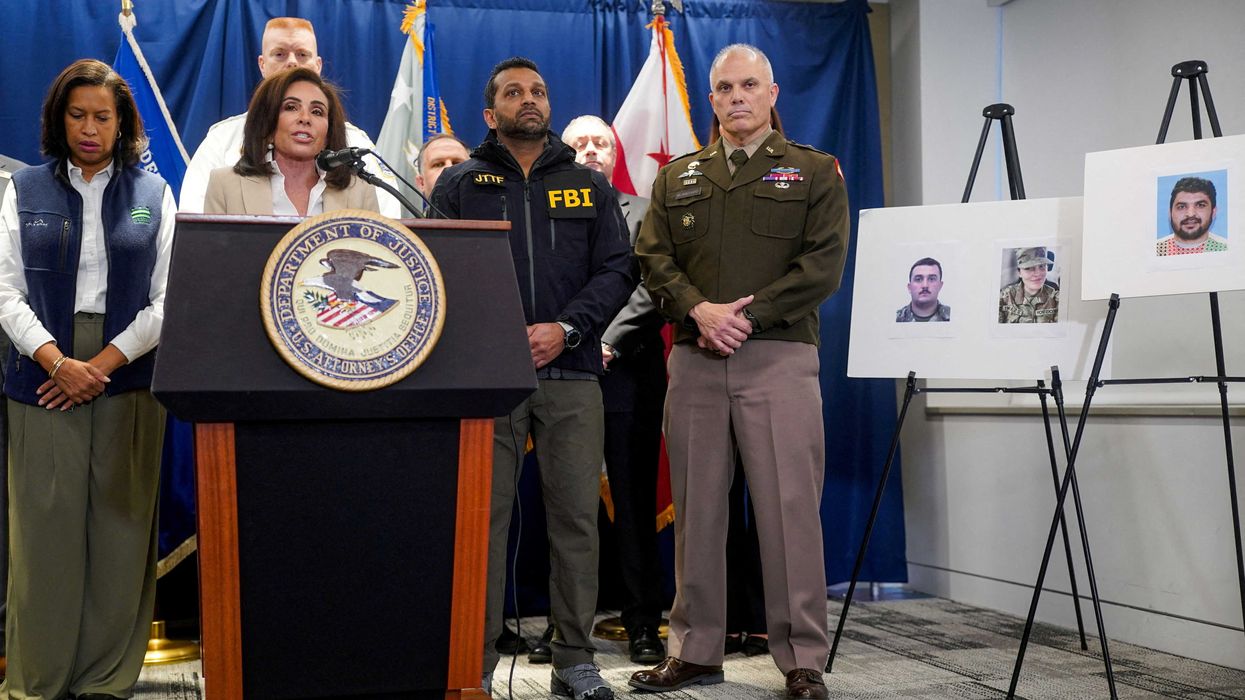DC shooting suspect possibly 'radicalized' online despite thorough CIA 'vetting': expert

U.S. Attorney for D.C. Jeanine Pirro speaks during a press conference with FBI Director Kash Patel and other authorities about the shooting of two National Guard members on November 26, in Washington, D.C., U.S., November 27, 2025. REUTERS/Nathan Howard. Displayed on the right pictures of two National Guard members who were shot, along with a picture of the Afghan suspect, Rahmanullah Lakanwal. TPX IMAGES OF THE DAY
On Wednesday afternoon, November 26, the shocking news broke that two National Guard members in Washington, DC had been shot near the White House.
The suspect in the case is Rahmanullah Lakanwal, who, according to the Wall Street Journal, "worked with CIA-backed military units during the U.S. war in Afghanistan." And the National Guard members, who survived but were in critical condition, have been identified as 24-year-old Andrew Wolfe and 20-year-old Sarah Beckstrom.
During a Thanksgiving Day appearance on MS NOW (formerly MSNBC), former FBI counterterrorism expert Rob D'Amico offered analysis of the investigation —emphasizing that the Afghan suspect might have been "radicalized" online despite a thorough and comprehensive vetting.
D'Amico told MS NOW host Laura Barrón-López that the suspect might have "come over here" and "gotten radicalized" by ISIS (Islamic State, Iraq and Syria) — and may have had "some mental health issues."
D'Amico argued, "They're going to have to pull that apart. And it's really going to come from his communications that they're going to look (at), his friends, and who he hung out with."
When Barrón-López noted that D'Amico "personally fingerprinted thousands of Afghans…. for vetting" and asked him to discuss "the process," he responded, "In the beginning, when we were fingerprinting them back in 2003…. we would fingerprint them, we would take them, we'd keep them locally."
The former FBI counterterrorism expert continued, "We'd bring them back after our deployments, and we put them in. (I) actually worked on a program called the Quick Capture Platform. When we started fingerprinting them, it went up through the satellites, and we get a response in two minutes if that person had been fingerprinted before…. They would leave a thumbprint on a piece of tape, and when we'd fingerprint them, they'd come up — and we would know who they were. But those databases did finally start coming back real time. So we have those fingerprints. But again, if he was in the CIA's system, he was thoroughly vetted through fingerprints, through all these other means."
D'Amico noted that the suspect might have been "a plant" who was sophisticated enough to get through the CIA's comprehensive "vetting" system — or perhaps was a "trusted member" who "somehow got radicalized while he was here for four years or so."
- YouTube www.youtube.com

